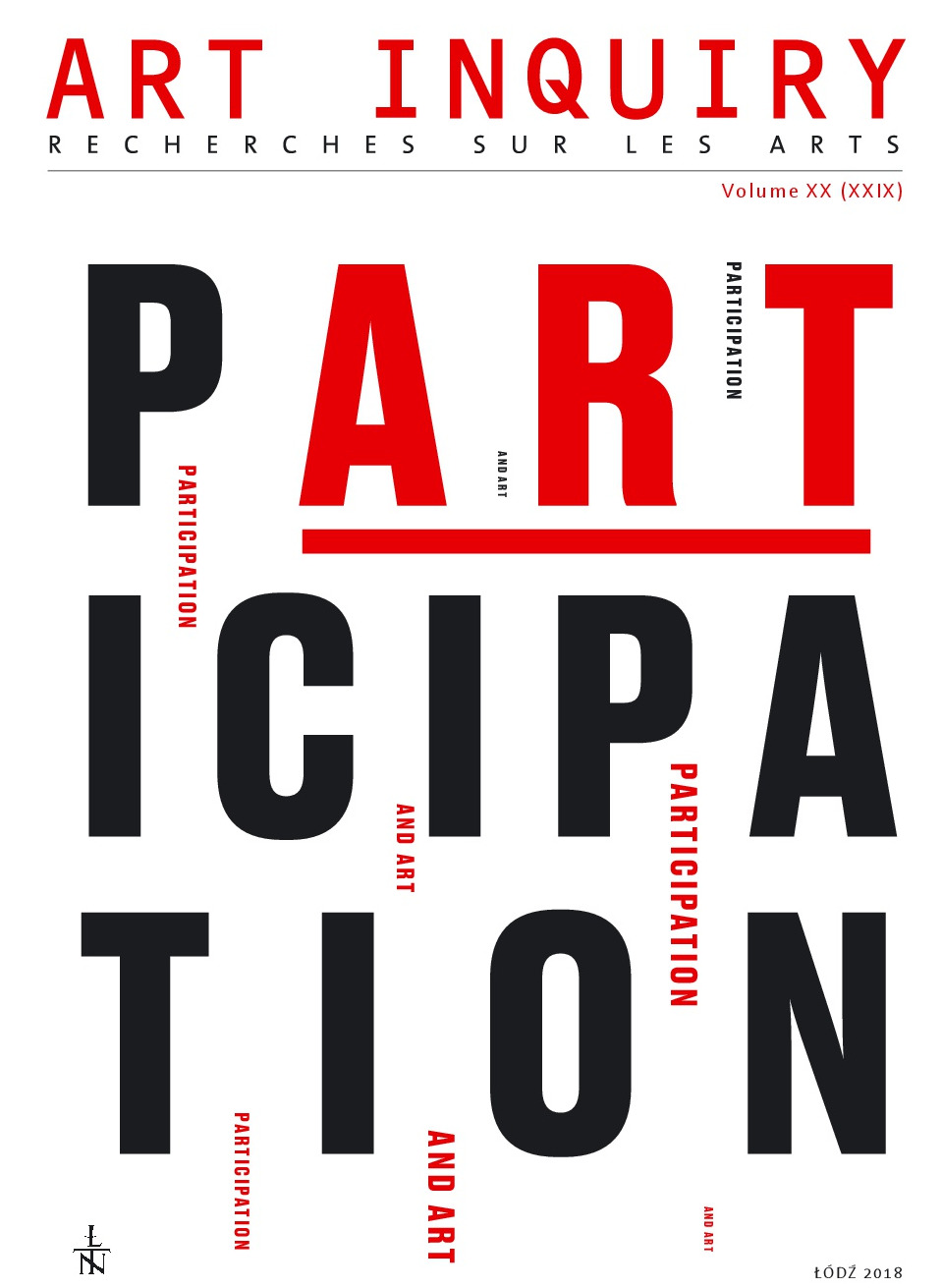Tadeusz Kantor – Engagement – Multiplication – Participation
https://doi.org/10.26485/AI/2018/20/14
Abstract
The article discusses the Multipart project prepared by Tadeusz Kantor for the Foksal Gallery in Warsaw (1970 and 1971). The name's neologism arose from the combination of words: multiplication and participation. The author's intention was formulated in the manifesto accompanying the whole event. For Kantor, it was important to question the notion of a work of art against growing consumerism. The artist was the author of a project of 40 canvases, which were used for umbrellas. The performers of the whole were students of the Academy of Fine Arts in Warsaw. The works were sold at the vernissage to start the second part of the Multipart. The spectators' participation was secured with a carefully written contract and assumed that the final shape of the work would be created through and through the recipient's creativity. From today's historical perspective, thanks to the works of Claire Bishop, it is quite easy to see the ideas of the artist of Polish convergence with the ideas of the Situationalist International. Kantor, with all the fascination with the possibility of active involvement of the viewer in the creation of the work, did not associate his actions with politics or any aspect of politics. This fact clearly separates his way of thinking about the function of art in the modern world from the leftist movement of situationists.





